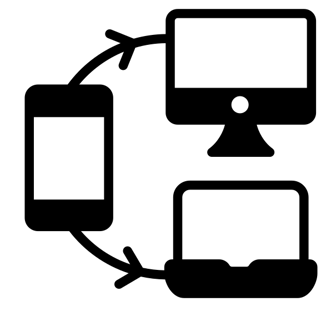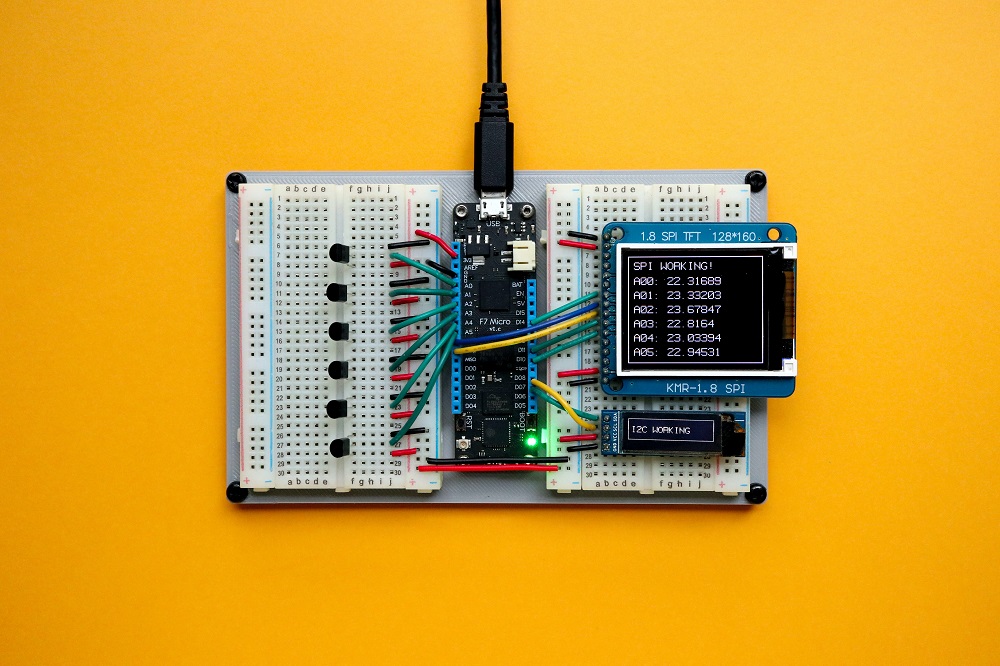
Every industry wishes they had a crystal ball to help them make better predictions about when equipment will fail, which markets to enter (and which to avoid at all costs), and which products will turn into bestsellers.
While there’s no cure-all to alleviate the risks of doing business, Internet of Things (IoT) devices have proven highly valuable in enhancing preventive maintenance and allowing businesses to predict equipment failure with near-perfect accuracy.
IoT sensors collect machine data (eg: operating temperature, supply voltage, vibration, etc.) and wirelessly transmit the data to a cloud-based, centralized data storage platform in real-time. Artificial intelligence automatically analyzes the data to detect anomalistic patterns that might portend imminent machine failure. If an anomaly is detected, the platform automatically generates a work order request, which is sent to your CMMS in order to be assigned to an available technician.
IoT in predictive maintenance: What is it about?
Unlike reactive maintenance, the main objective of predictive maintenance is to plan ahead to avoid unexpected equipment failure. The costs of unscheduled downtime vary widely by industry. Automotive manufacturers lose $22,000 per minute of downtime. According to Gartner, the average cost of IT downtime is $5,600 per minute. In fact, 59% of Fortune 500s experience at least 1.6 hours of downtime per week, which costs them $4.6 million per year in lost productivity.
While preventive maintenance is typically based on a calendar or usage schedule, most equipment failure (82%) occurs randomly, according to a study by the ARC Group. In fact, only 18% of equipment fails due to age. Preventive maintenance draws on historical failure metrics and OEM recommendations to schedule maintenance at an optimal frequency, but it ignores real-world conditions.

IoT-assisted predictive maintenance allows maintenance supervisors to collect machine data to monitor the operating condition of high-value assets in real-time. The system automatically collects data on availability, reliability, and metrics such as Mean Time Between Failures (MTBF) and Mean Time To Repair (MTTR). Machine learning models learn from this data over time to make better predictions regarding machine failure.
Real-time equipment monitoring also enables facilities to respond faster to emergencies—especially when a work order request is automatically triggered at the first sign of equipment breakdown.
How does it work?
IoT devices communicate using Machine to Machine (M2M)—technologies that allow machines to automatically exchange data. M2M enables networked devices to exchange information and perform actions without the manual assistance of humans.
For example, if an IoT sensor detects irregular vibration patterns in an asset, it can send a work order request to your CMMS to schedule preventive maintenance and circumvent asset failure.
The main components of an M2M system include sensors, RFID, a WiFi network, and autonomic computing software that is programmed to help a network device interpret data and make decisions.

M2M technology was first adopted in manufacturing and industrial settings where other technologies such as SCADA and remote monitoring helped remotely manage and control data from equipment. It is now used in a variety of industries including healthcare, business, and insurance.
For example, ECG units already exist that transmit information on the blood pressure, pulse, or blood sugar level of the patient to doctors in the nearest hospital while the patient is being transported in the ambulance. This technology enables medical professionals to prepare for the patient’s arrival and start treatment quicker—which can save lives.
What are the benefits of IoT asset tracking?
Every business has valuable assets, from manufacturing equipment to vehicle fleets and even livestock. IoT asset tracking extends the useful life of assets by automatically generating work order requests and maintenance schedules based on real-world conditions.
Outside of maintenance management, IoT asset tracking provides a myriad of benefits including better inventory management, theft prevention, and cost savings.
- Implement predictive maintenance - Transition from preventive maintenance (time-based or usage-based maintenance) to predictive maintenance, in which maintenance is scheduled strictly when needed. This allows organizations to cut down on the costs of over- or under-maintaining an asset.
- Gain real-time data insights - Tracking equipment conditions and whereabouts in real-time lets you make better business decisions. For example, tracking fleet whereabouts allows you to optimize routes according to traffic conditions, weather, etc.
- Improve inventory management - Replenish inventory at the right time in just the right amount. Having access to real-time inventory data enables organizations to implement just-in-time inventory management and cut down on warehousing costs and avoid losing revenue due to understocking.
- Locate and identify lost equipment - Identify lost or stolen items to improve theft prevention and recovery
- Reduce costly problems - Monitor alerts and take immediate action to reduce negative impacts from malfunctions/equipment failure or asset theft.
Image credits:
1. Check Time by Smashing Stocks from NounProject.com
2. Lan Network by VectorsLab from NounProject.com
 For immediate assistance, please call us at (512) 328-3235
For immediate assistance, please call us at (512) 328-3235


